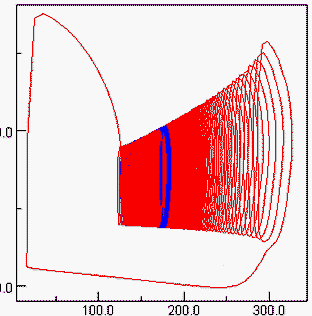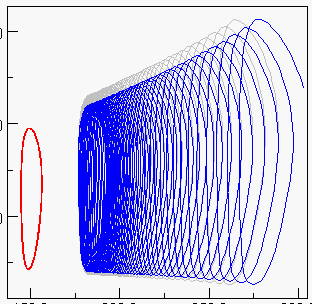The stunning term, "Blue Sky Catastrophe" has been given to the last, out of the seven known, main bifurcations of a periodic orbit. Its core is a homoclinic saddle-node bifurcation of two periodic orbit: stable and saddle, that merge and vanish giving rise to the emergence of a stable periodic orbit of infinite length and period.

The blue sky catastrophe describes a continuous and reversible transition between periodic bursting and tonic spiking activities in a reduced oscillatory heart interneuron model. The bursting trajectory slows down near the ghost of the saddle-node orbit and thus increases its period and gains more spikes within a burst.

The case where the homoclinics the saddle-node orbit are non-central leads to the onset of bi-stability of co-existing tonic-spiking (red) and bursting (blue) activities in the neuron.
| Author Institutional Affiliation | GSU |
| Author Email | |